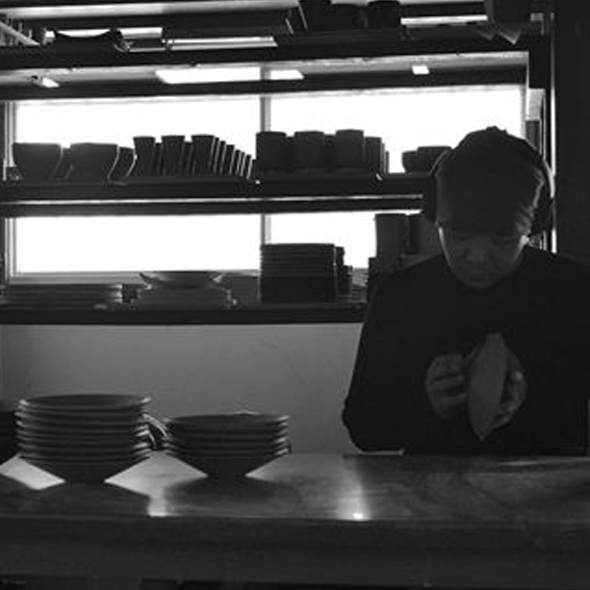陶芸家 遠藤 岳
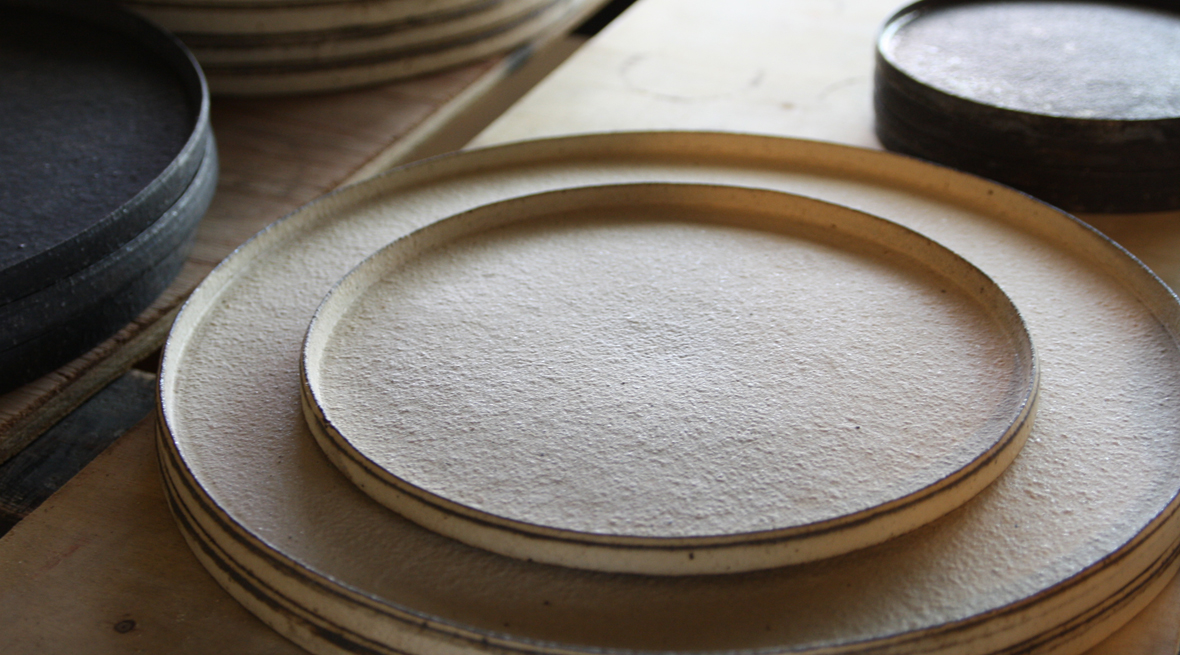
緑豊かな小田原の工房で生まれる作品
余分なものを極限まで削ぎ落としたシャープなデザインと土の表情を生かした質感が、国内はもちろん、海外の方からも人気の遠藤岳さんの作品。その作品が生まれる場所を訪れました。
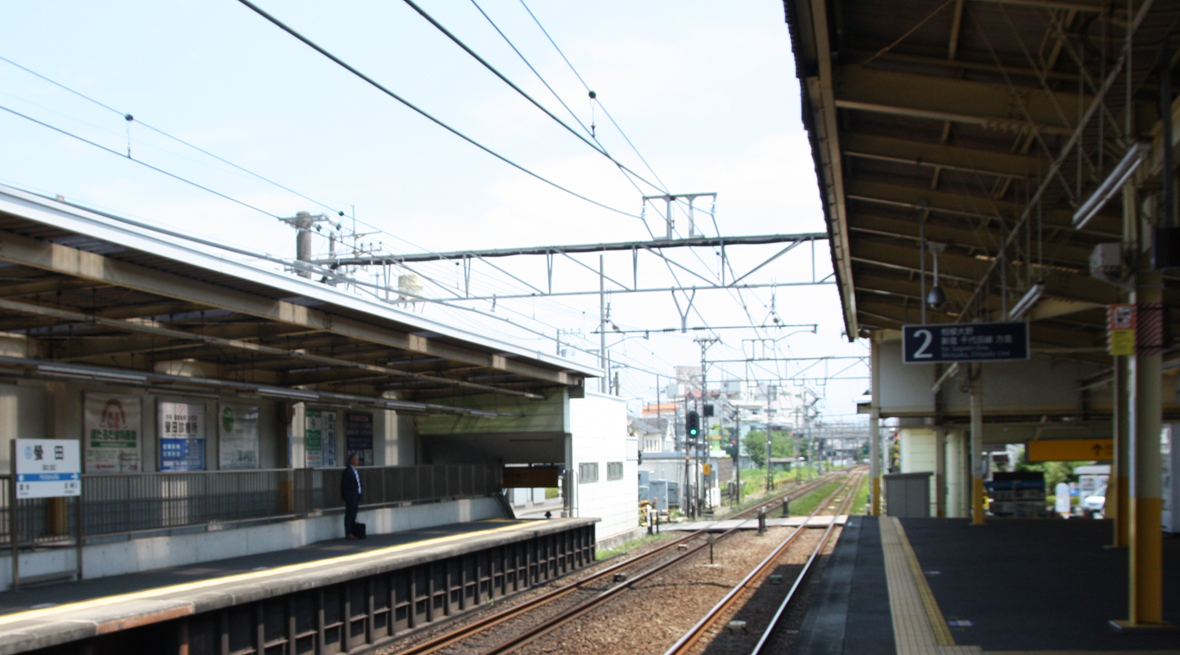
神奈川県小田原市は、戦国時代に北条氏の「城下町」として発展し、江戸時代には東海道屈指の「宿場町」として栄え、明治期には政財界人や文化人たちの「別荘、居住地」として愛されてきた、緑豊かで温暖な土地。長い歴史と伝統・文化を持ちながらも、のんびりとした空気の流れるこの街に、遠藤さんの一軒家を改築した工房があります。
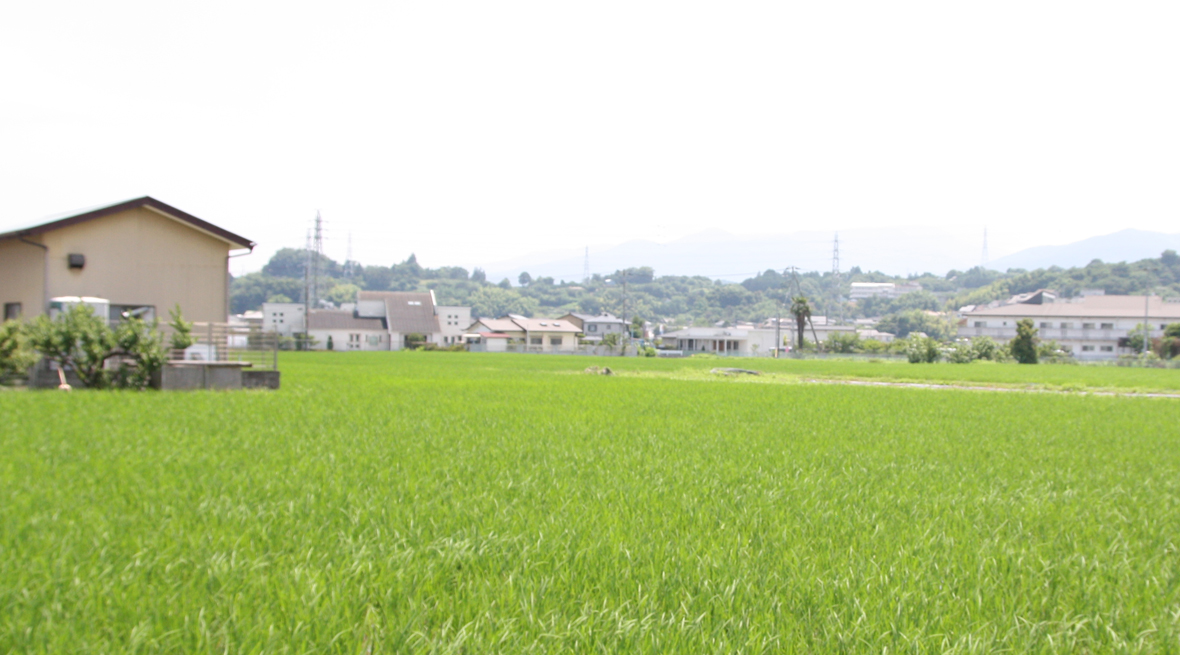
Simple form with earthy texture, created in the studio in Odawara, a green country city near Tokyo
One day in July 2017, we visited Mr. Endo’s studio in Odawara, a historical town near Tokyo.
Many people, not only in Japan but also overseas, love his works being attracted by the earthy texture and sharp design trimming the fat to a minimum.
In the age of provincial wars (from the middle of the 15th century to the early 17th century), Odawara city (currently in Kanagawa prefecture) developed as a castle town governed by the Hojo clan.
In the Edo Shogun period, Odawara was well known as one of the most thriving post towns along the Tokaido Road (the main trunk road between Edo and Kyoto).
After the Edo period was over and the modern Japan started, many politicians, wealthy business people and cultural figures built their second houses in Odawara blessed with green, warm temperature, history, tradition and culture.
The town has laid-back atmosphere.
Mr. Endo’s studio, which is transformed from a regular house, located in a corner of the town.
作品づくりへのこだわり
中に入るとやや薄暗い工房内。土を乾燥から防ぐため、日光を遮り湿度にも気を遣っています。驚きの薄さと、ざらりとした土の質感が独特の雰囲気を持つ遠藤さんの作品。土は伊賀と信楽のものをブレンドしたものを、取り寄せて使用しています。作品の表面にぶつぶつと出ている粒のようなものは、「長石」という鉱物で、土をふるいにかける際に、あえてこの粒が残るようにしています。焼き方は、窯の中に酸素が足りない状態で、不完全燃焼をさせる「還元焼成」という方法。そしてそこからもうひと手間、冷ましながらもさらに燃料を供給して、そのまま燻ながら冷ましていくそうです。(この技法を「冷却還元」または「還元落とし」と呼びます。)
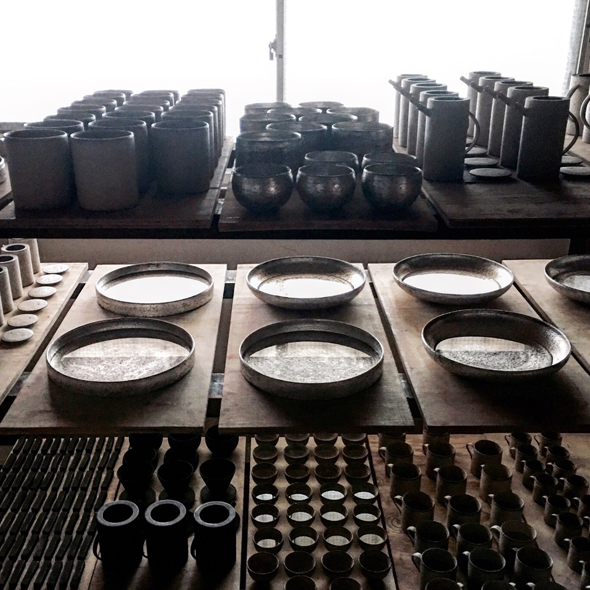
He always throws himself into making potteries.
The inside of his studio is dimly lit.
Sunshine and humidity shall be carefully controlled in order for clay not to dry.
A distinctive atmosphere of his works is due to their surprising thinness and earthy texture.
Clay used for his works is a blend of two local clays – one from Iga (part of Mie prefecture) and another from Shigaraki (part of Shiga prefecture), both of which are well-known districts of pottery.
Granular surface of Mr. Endo’s works is due to feldspar contained in material clays. He intentionally leaves it in screening the clays.
Reduction firing (a kiln atmosphere which is deficient in free oxygen) is taken for making his items.
The items in the kiln are continued to be fumigated by putting more fuel even in the cool-down process after the firing. (This is called cold reduction.)
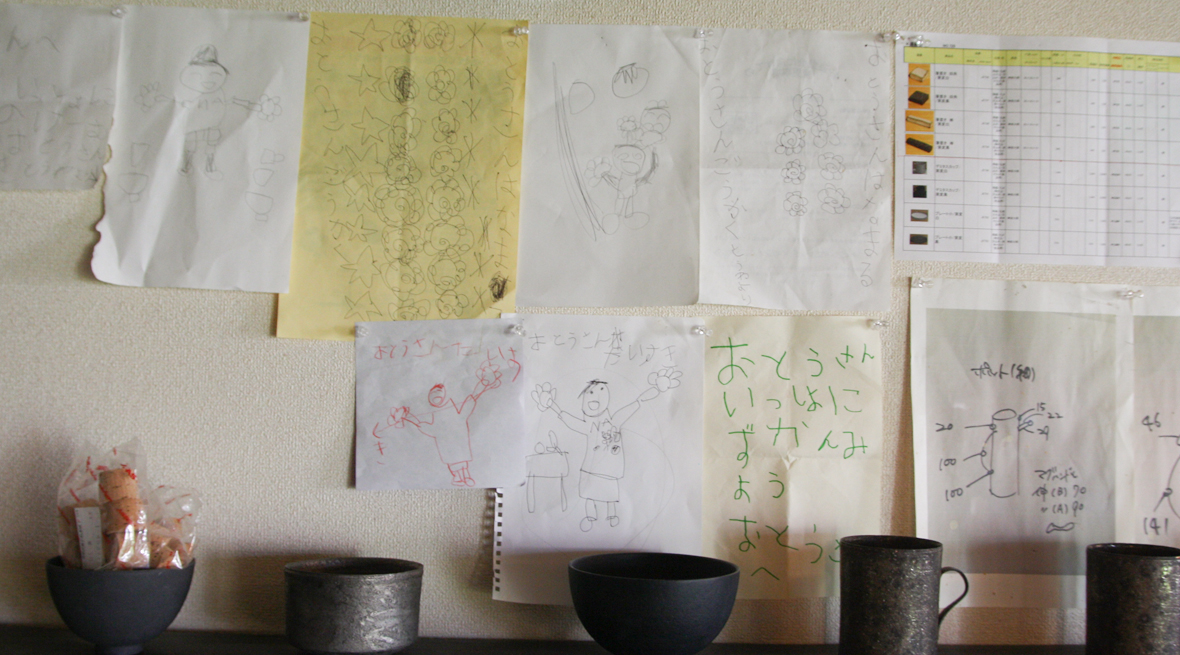
壁にはお子さんの写真やお手紙がたくさん。遠藤さんご自身も「趣味は子供」とおっしゃるように子煩悩さが伺えます。
There are many drawings/photos of and letters from his children on the wall. Mr. Endo says, “Child-raising is my hobby.” He is a doting father!
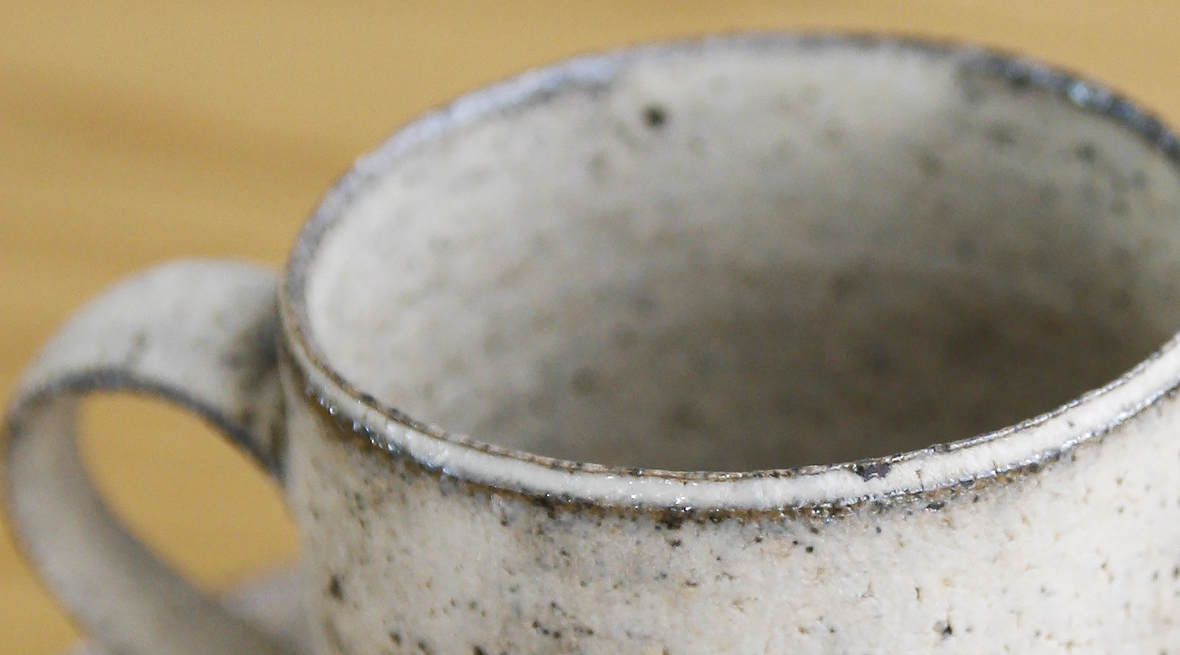
フチの黒い部分は、やすりで削って内側の土の部分が表面にあらわれたところ。
The rim of the cup above is black because the original clay comes out by filing.
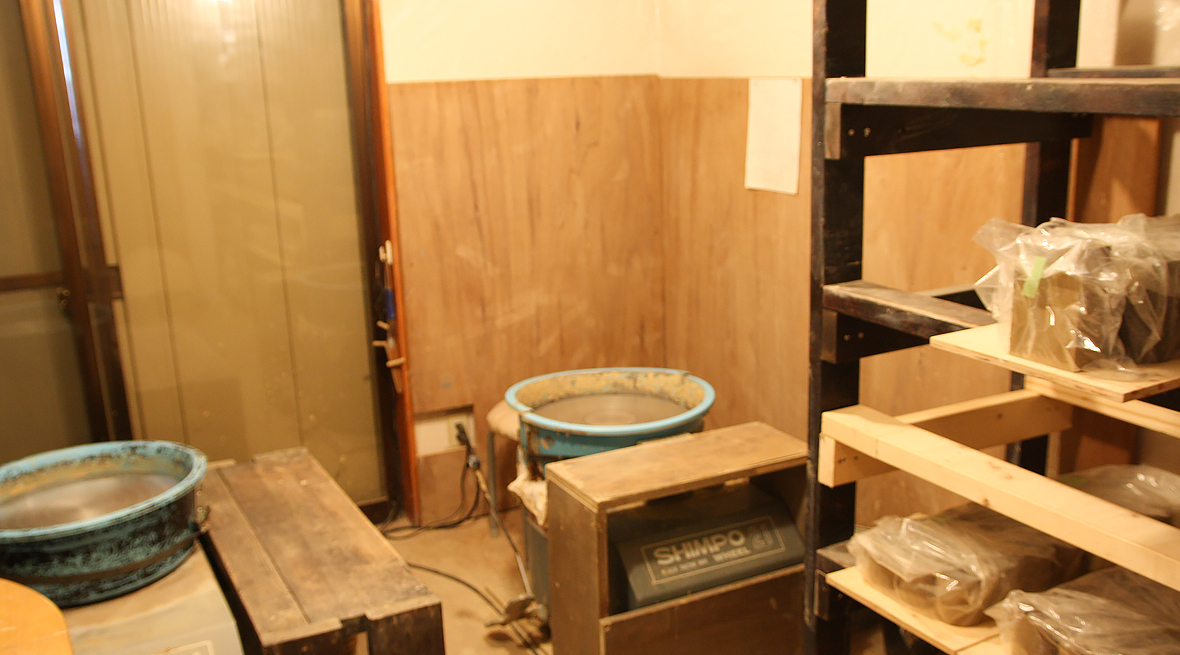
作業場の様子。右のろくろが成型するためのもの、左は仕上げに削りをする際に使います。
His workspace. A potter’s wheel in the right-hand side is used for molding and one in the left-hand side for finishing.
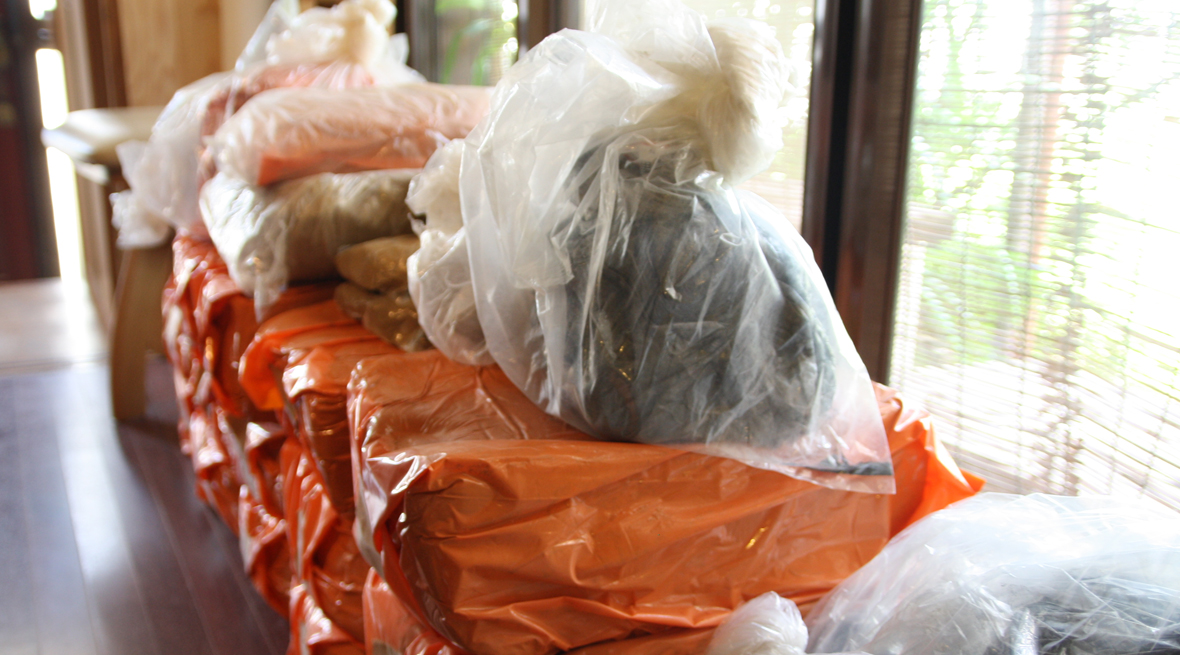
たくさん並んだ土は、作るものによって硬さや必要な量が違うので、分けて保管しているとのこと。
Packages of clay are stored separately depending on the intended use.
陶芸を始めたきっかけと作品へのインスピレーション
独特の作風を持つ遠藤さん、どこで陶芸を学んだのか聞いてみると、なんとほぼ独学とのこと。ご縁が重なって、窯やろくろを知り合いから譲り受けることになり、そこからご自身で作品づくりを掘り下げていきました。
陶芸の技術は独学で得たものですが、建築関係のお仕事をされていたお父様の影響もあり、もともとデザインには興味があったそうです。今でも建築や音楽、日常で触れるテクスチャなどから着想を得ており、特定の陶芸家というよりはデザイナーからの影響を受けることが多いということ。お気に入りの音楽を聴きながら制作されています。そんな環境が、思わず目を奪われる、独特のデザインに影響を与えているのかもしれません。
Background to his career as a potter and sources of inspiration for his works
His unique style was built through neither training at school nor apprenticeship under any particular senior potter, but with self-education in large part.
He just happened to receive a kiln and potter’s wheels from his acquaintances.
He studied making potter by himself with those tools.
Although his techniques of pottery come from his self-study, he has been interested in design since his boyhood, influenced by his father who was an architect.
He is now inspired by architecture, music and different textures which he has the chance to have in daily life.
As such, he is more influenced by designers than by particular potters. He works listening to his favorite music.
The design of his works catching people’s eye may come from such his background and working style.
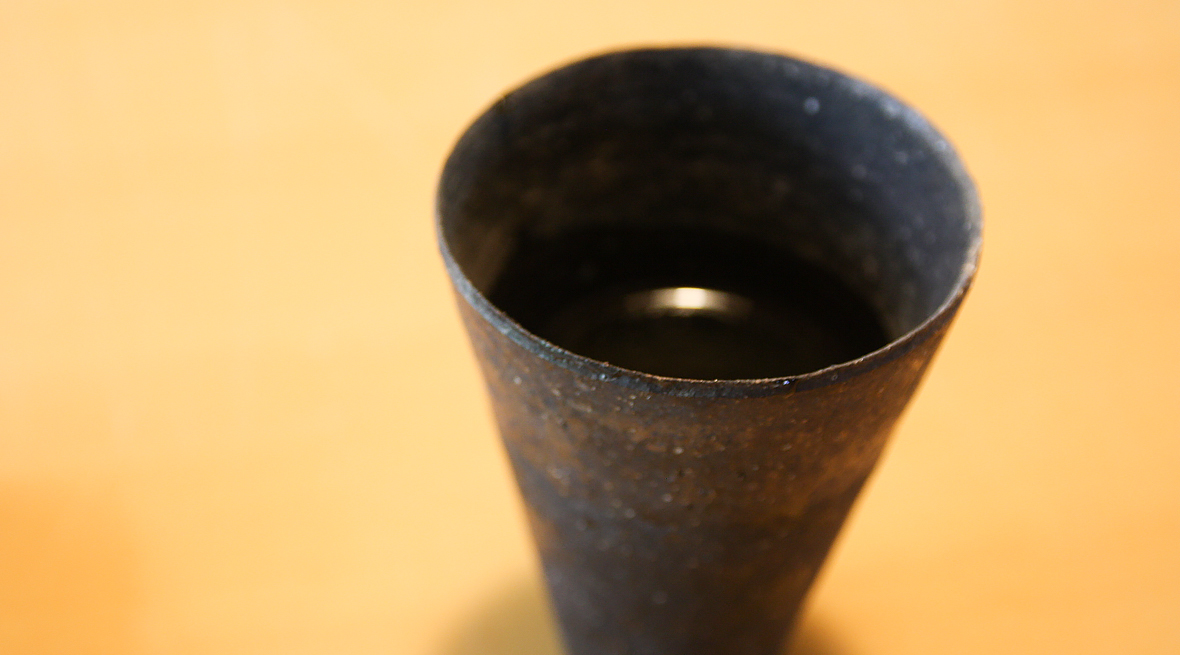
遠藤さんのタンブラーで冷たいお茶を出していただきました。
Mr. Endo served tea to us with tumblers made by him.
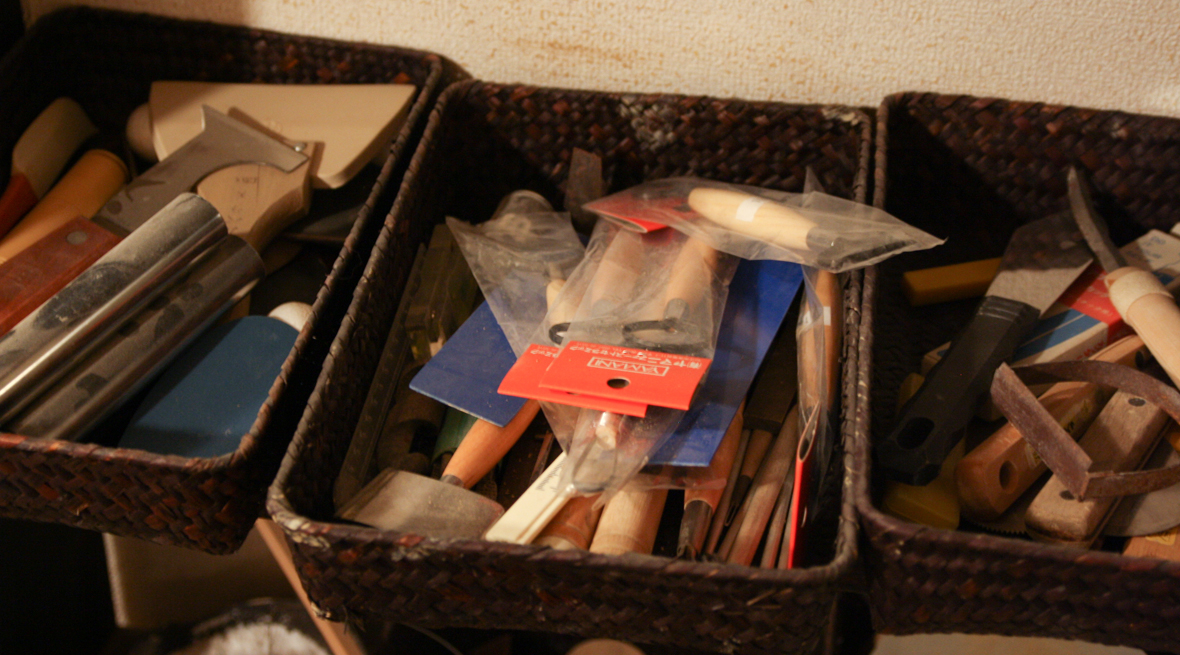
作業場にたくさん並んだ道具。調理用のスパチュラ(!)も道具として使っています。奥様に「最近スパチュラが見つからないんだけど」と言われて、ヒヤヒヤしたそう。
A variety of his tools in the studio, including even a spatula used in the kitchen.
His wife doesn’t know that and said recently to him, “I may have lost my spatula. Don’t you know where it is?” He got nervous!
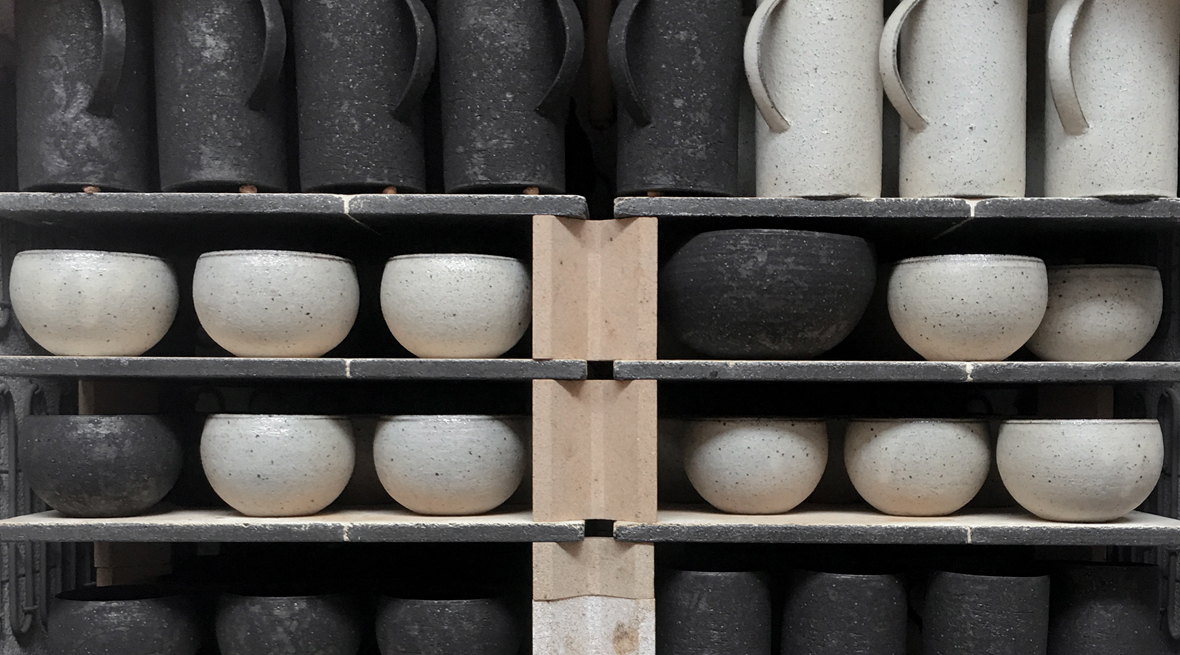
窯で焼きあがった作品たち。
Finished works in the kiln.
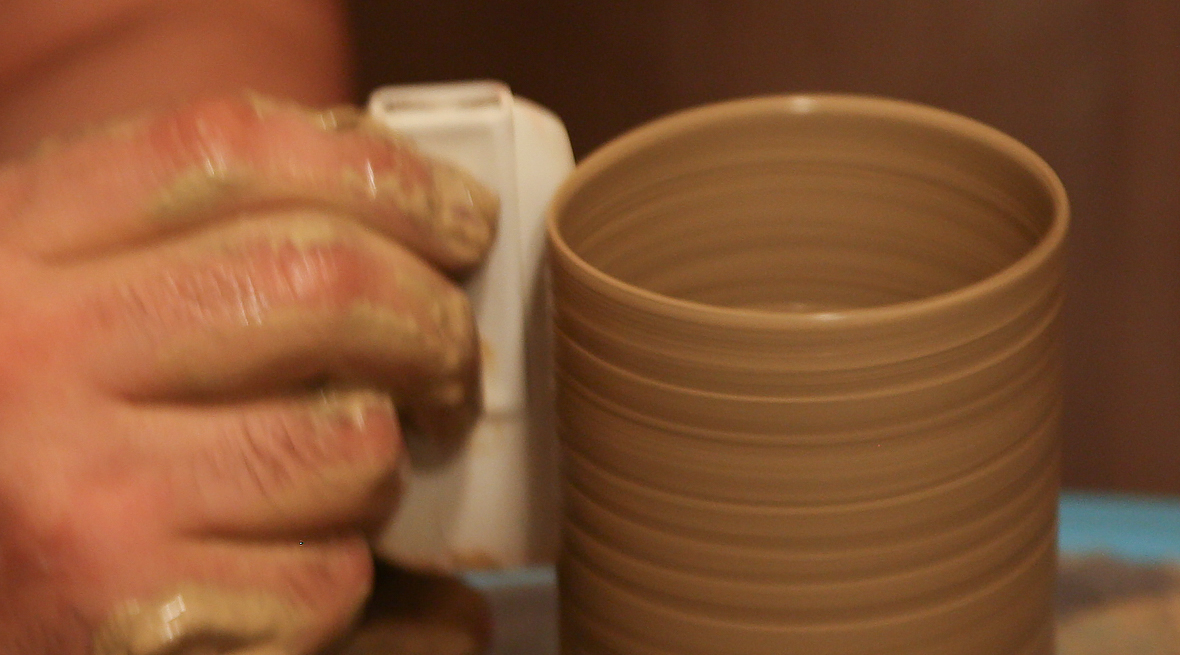
ろくろによる成型。愛用のスパチュラを使って表面を整えていきます。
Molding with the wheel. The spatula in question is used for smoothing the surface like this.
練りとろくろ成形の様子を見せていただきました
Pictures below show the process starting from kneading clay.
遠藤さんの作品ができるまで

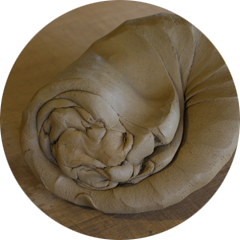
01 練る
粘土の固さを均一にし、
中の気泡を取り除いて
状態を整えます。
土の状態は完成度にかかわるため、
重要な最初の工程。
土にも作家さんそれぞれの
こだわりが。

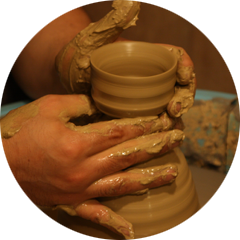
02 成形
遠藤さんの場合は、
ろくろで成形していきます。
他に、手でこねる方法や、
型を使う方法もあります。

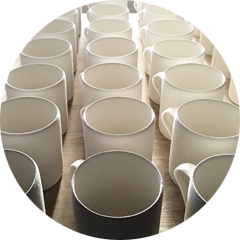
03 乾燥・削り
しっかり乾燥させた後、
削って形を整えていきます。

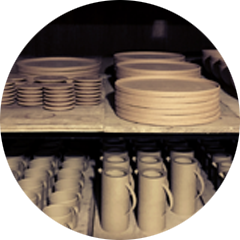
04 素焼き
釉薬をかける前に素焼きをして、
生地の強度を高めます。

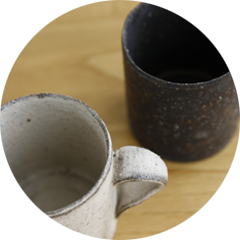
05 釉薬
釉薬とは高温で溶けて、
土の表面にガラス質の膜を
はるもの。
遠藤さんの作品は生地も
薄いですが、釉薬も
薄くかけるとのこと。

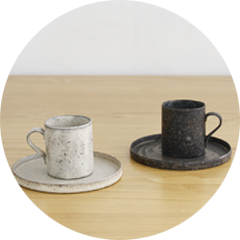
06 本焼き→完成
不完全燃焼させた後、
さらに燃料を供給しながら
冷やしていきます。

国内だけでなく海外からも人気の遠藤さんの作品。陶芸の技術は独学で得たそうなのですが、建築家だったお父様の影響もありもともとデザインには興味があったとか。だからこそ繊細なラインと土独特の質感を併せ持った、洗練されたデザインが出来上がったのだと思いました。
WISE・WISE tools 新井
Endo-san’ works are popular among many people in Japan and overseas.
He constructed his unique style with his self-study, but there is influence from his father, an architect, on sophisticated design of his works, including delicate profile and earthy texture.
Such background stories enhance my attachment to his works.
Potter・Takashi Endo
陶芸家・遠藤 岳
1974年 横浜市出身
1996年 神奈川県にて作陶活動を開始
1999年 第3回花の器展奨励賞、第3回花のすみか大賞入選
2003年 第3回大韓民国国際陶磁ビエンナーレ入選
2005年 第7回国際陶磁器展美濃入選
2014年 第10回国際陶磁器展美濃入選
In 1974, born in Yokohama city.
In 1996, started his career as a potter in Kanagawa prefecture.
In 1999, won prizes at two exhibitions in Japan
In 2003, won a prize at world ceramics exhibition in Korea.
In 2005 and 2014, won prizes at world ceramics exhibitions in Mino, Gifu prefecture.
